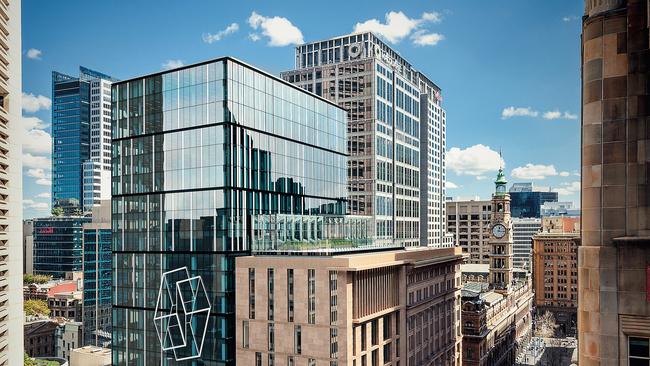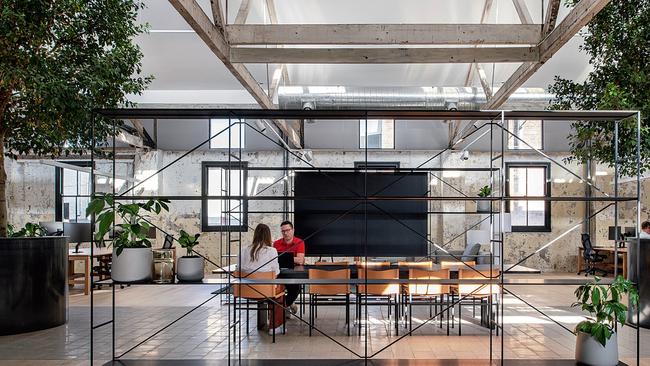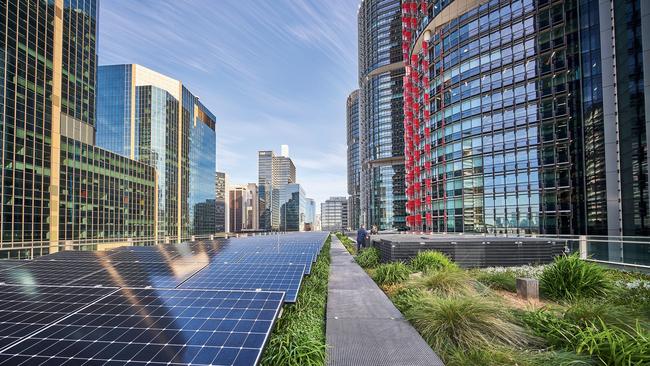Commercial buildings putting the environment first
Concern for the environment and employees alike is at the heart of these top four sustainable, and awarded, new commercial spaces. SEE THE PICTURES

5 Martin Place, Sydney
The premium office building managed by Dexus on Sydney’s financial boulevard marries the sustainability expectations of contemporary businesses while still celebrating the city’s past.
The design includes a new tower with an 11-storey central atrium and soaring triple-height foyer.
The heritage building’s distinctive features are maintained and updated, including a sandstone and marble façade, and marble-clad stairs. The Martin Place edifice comprises 19 levels of office space and uses a full-height glass façade in the upper floors to flood workspaces with natural light.
At the design’s core is a commitment to sustainability, with the building achieving 5.5-Star (Office Design v3) and 5-Star (Office as Built v3) Green Star ratings as well as a 5-Star NABERS Energy rating through initiatives such as multi-service chilled beams, a high-efficiency façade and sensor lighting controls.
Dexus head of development Paul Oates says 5 Martin Place, one of the company’s first buildings to be certified carbon neutral, used the new to unearth its history.
“Our focus on sustainability started with construction where we reused and restored the original fabric and form. This resulted in a high-performance premium office space that promotes reduced car usage and active commuting from the business community,” he says.
Who are Australia’s biggest green movers and shakers? The List: Green Power Players 2022
-
Heritage Lanes, 80 Ann Street, Brisbane
On track for completion early this year, Heritage Lanes is Mirvac’s landmark Queensland commercial building, spanning 35 levels with more than 60,000sq m of office space.

80 Ann Street is the first office development in Australia to target the highest rating of the Green Building Council’s newly-released rating tool, Green Star Buildings.
It will be Mirvac’s first “all electric” office development, alongside 5.5 Star NABERS Energy and 4 Star NABERS Water ratings and a Platinum Core and Shell WELL Certification.
The design features a significant focus on occupant wellbeing, an emerging focus for landlords.
It is equal parts co-owned by Mirvac and M&G Real Estate, and major tenants include KPMG, Suncorp and APA.
-
The Hayesbery, 1-11 Hayes Road, Rosebery, NSW

The Hayesbery by the Goodman Group showcases adaptive reuse of an under-utilised heritage industrial site, with the developer turning four neglected industrial buildings into a sustainable, integrated and flexible campus-style workplace.
The design was underway prior to the arrival of Covid-19, but was quickly updated to incorporate the latest in health, safety and working styles for the post-pandemic recovery. Touchless entries, antimicrobial materials including copper door handles, access to fresh air and indoor trees are new features.
The site was originally a hat factory and this heritage inspired the use of woven metal work, hand-stitched leather details and solid timber joinery as a connection to its history.
Sustainability is central to the design, including a 100-kilowatt solar system, rainwater tanks, energy-efficient lighting and electric vehicle charging stations. Goodman CEO Australia, Jason Little, says The Hayesbery’s abundant daylight, natural materials and green zones help reduce stress, improve mental clarity and advance wellness.
-
Daramu House, Barangaroo South, Sydney

Daramu House displays all the cutting-edge technologies you’d expect in the country’s first carbon-neutral precinct.
It was developed and built by Lendlease and designed by Australian architects Tzannes. Daramu means “tree house” in the First Nations language of the Sydney region, with the name a reflection of both the timber dominant in the building’s construction and architecture, as well as the importance of First Nations culture and history.
The seven-storey commercial building sports a green roof — the 17,000 plants and flowers growing there are designed to capture and harvest rainwater. The roof also features insect hotels comprised of logs and branches to provide the ideal habitat for pollinators, including native reed bees and blue-banded bees. This further supports the pollination of nearby gardens and parks, while the green roof also plays an important role in reducing the heat of the building and maximising the efficiency of its 134-kilowatt solar panel system.
In 2020, Daramu House achieved a 6 Star Green Star – Design & As Built rating, a direct result of the 90 per cent sustainably forested timber used in its construction.
Opting for timber rather than traditional building materials such as steel and concrete slashed embodied carbon by 48 per cent and 97 per cent of all construction material used on the project was recycled.


To join the conversation, please log in. Don't have an account? Register
Join the conversation, you are commenting as Logout